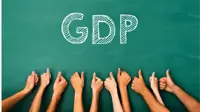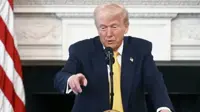Can this rally last?
By By Rex Mathew | 31 Aug 2006
Are we seeing yet another bull run or has this pull-back rally been too fast and too premature? Though global environment has improved, uncertainties still remain.
The stock market recovery over the last couple of months has been a pleasant surprise to most traders and investors. After the dark and gloomy days which started in mid-May and extended into June, in recent weeks investors have seen their portfolios reclaim a considerable part of the lost value.
From an all-time closing high of above 12600 on 10 May, 2006, the Sensex had dropped more than 3650 points to its recent closing low of 8929 on 14 June. From that level, the index has recovered more than 31 per cent to move above 11700.
Likewise, the Nifty slumped to a recent low of 2633 on 14 June from its 10 May lifetime high of above 3750. The index has regained over 30 per cent to around 3425 levels now.
Nobody expected this to happen so soon and, except for the bears and the more cautious among analysts, nobody is complaining.
Even though the Sensex is a good 900 points off its early highs and the Nifty has to add another 325 points to reclaim its lifetime highs, there are many analysts who believe that the indices can post new all-time highs over the next couple of months.
Even as recently as last month or even early this month, such forecasts would have been dismissed straight away. But the current pull back has been strong enough to bring back some of the confidence in traders and stocks, including mid-caps, are responding favourably to positive news.
So are we seeing yet another bull run which would take the markets back to the euphoric highs of early this year? Or has this pull-back rally been too fast and too premature and yet another painful correction is around the corner?
Behind
the pull-back
As is well known, the major correction in global equity
markets, which started in May of this year, was mostly
on fears of rising interest rates. Central banks across
the world, led by the US Fed, were raising benchmark interest
rates which finally forced investors to cut down their
exposure to equities.
Finally the Fed decided to pause earlier this month, encouraging investors to hope for steady rates in the short term and possibly lower rates by next year. Crude oil prices have declined after a sharp surge during the second week of this month. Corporate performance in major global economies remains robust and there is no decline in corporate deal-making.
Helped by these above factors, all major global indices have recovered from their lows seen in May-June. Select markets like India have considerably outperformed this month, mostly because of superior corporate performance and other internal dynamics.
Liquidity flows into emerging markets has been considerably lower during this period when compared to earlier rallies. Foreign investors have kept their earlier exposure to these markets though they were not too willing to increase the exposure. Low volumes have not yet deterred domestic investors from backing this pull-back rally.
Reading
Ben Bernanke's mind
The US Fed's outlook on future interest rates remains
the single most important direction-setting factor for
global financial markets. Analysts and economists are
spending much time and effort to predict the Fed's future
course of action on interest rates.
Though there is no consensus as yet, the majority view currently favours steady interest rates in the short term. The Fed's rate setting committee is due to meet next month and is expected to keep the Fed rate unchanged. Slowing US economic growth and lower crude oil prices should prompt the Fed to take such a course.
However, the Fed rate outlook for the rest of the year remains uncertain. Despite the slowdown in growth, inflation in the US remains a concern. Though lower crude prices may have a calming influence on prices, the Fed may be prompted to go for one more rate hike before the end of this calendar year unless there is an appreciable drop in inflation.
Economists are much more divided on the medium term rate outlook. While some expect the Fed to maintain status quo this year and start cutting rates by early next year, others expect the Fed rate to move up another 75 basis points from current levels to as high as 6 per cent per annum by the middle of next year.
Inflation trends and the extent of US economic slowdown would drive the Fed's decisions on interest rate over the next year. If the US economy continues to expand at close to the long term average rate of between 3 and 3.5 per cent and there is no perceptible decline in inflation, further rate hikes are almost certain.
Most analysts are now predicting crude oil prices to cool off further to even $60 per barrel level, despite the uncertainties in the Middle East and the Iranian nuclear dispute. If this actually happens, US inflationary pressures would moderate. And if US economic growth over the next couple of quarters remain around 2.5 per cent per annum, the Fed is very likely to maintain status quo and possibly consider a rate cut by early next year.
Interest rate decisions of the US Fed over the next 18 months would be the prime driver of liquidity in global financial markets. Though the current pull-back rally in India has happened without much overseas inflows, further gains would be difficult without more active FII participation.
US
economic slow down
There are not many now who continue to maintain that the
US economy is in fine fettle. The more optimistic economists
go with the Fed's analysis that the slowdown is only moderate,
and hence beneficial, and the US economic growth would
settle down closer to its long term average in the near
term.
But some of the economic data released over the last couple of months have seen an increasing number of economists who believe that the Fed rate hikes over the last two years have gone too far and the US economy is now staring at a considerable slowdown in growth rates. A minority believe that there is a serious threat of the US economy slipping into a recession by next year.
There are very clear signals of a substantial slowdown in the US real estate market. Home sales, both existing and new, have slowed down quite appreciably. Lower asset prices would likely affect consumer spending, which was boosted by cash generated from home loan refinancing over the last few years.
Higher energy prices have also started affecting retail consumer spending, as evident by the lacklustre sales growth by retail stores.
But there has been no decline in average wages in the US and unemployment is still below 5 per cent. Sustained wage growth have so far prevented further decline in consumer spending.
Corporate profitability also remains high, with an 18 per cent increase on an average for the quarter ended June 2006. There are no clear signs, as yet, of a slowdown in US corporate spending either.
In short, it is still unclear if the US economy is headed for a soft or hard landing. A soft landing would be positive for financial markets while a hard landing, in the form of a sharp decline in growth rates, would bring considerable pain for investors. The impact of past Fed rate hikes and future crude oil prices would be the deciding factors over the next couple of quarters.
Indian markets may not be impacted as much as other Asian markets by the developments in the US. The Indian economy, except for the high profile IT industry, is considerably less dependent on US demand than other large Asian economies.
Domestic
corporate profitability
Indian frontline indices have outperformed most of their
global peers over the last month, helped by the strong
quarterly numbers from domestic companies for the April-June
quarter. The financial performance of listed companies,
especially frontline companies, has been beyond most analyst
forecasts.
The trend should continue for the current quarter and, most likely, for the second half of the current financial year as well. So the corporate fundamentals are supportive of a firm market over the next couple of quarters.
Towards the end of this calendar year, the markets would have fully discounted the earnings for 2006-07, as analysts would get a firm idea about full year numbers from the performance of the first three quarters. The markets would then start looking at earnings growth forecasts for 2007-08.
As long as the overall economic environment does not face any major shocks, it is almost a given that the Indian corporate sector would enjoy very good top line growth during the next financial year as well. There are no signs of any let up in demand, both consumer and corporate, and the picture would not change substantially even if the farm sector underperforms.
But there are rising doubts about corporate profitability, going forward. Operating margins have been shrinking for many sectors over the last few quarters and the situation may worsen in future. Wages are rising fast and pricing power of most companies would continue to decline as competition intensifies further.
Many sectors have already entered or are entering an investment phase. Fresh capacities come at higher capital costs and would affect profitability. Interest costs have already started rising and further rate hikes would squeeze margins even lower.
Markets may choose to ignore declining margins as long as absolute growth remains robust. But that would increase market vulnerability in the event of any major event or events which could affect overall growth.
Domestic
political scenario
Though the country has become used to political uncertainty
over the last few decades, the domestic equity markets
can still be very sensitive to such uncertainties. The
domestic political situation has been fairly stable over
the last year and the markets have, by and large, ignored
political hiccups including inactivity on the reforms
front.
Emboldened by their election victories in Kerala and West Bengal, the Left parties had raised their criticism of government policies. Some informal moves to revive the 'third front' at the centre were also a matter of considerable speculation for some time.
But such moves have not gone anywhere and the criticism has also become less strident, mostly because of a more aggressive approach from the ruling party. Surveys showing a comfortable majority for the ruling alliance minus the Left parties in mid-term polls, if held today, could the government to get more aggressive.
If these surveys boost the confidence of the ruling alliance further and they decide to opt for snap polls, the markets would face some volatility as financial markets hate uncertainties. Even if all the surveys point to the return of the present government, the markets are likely to be subdued during the run up to the elections.
After
all, memories of the last general elections — when
the then government
was widely forecast to return — and the crash that
followed at the shock defeat of the NDA, have not faded
from the minds of investors.






















